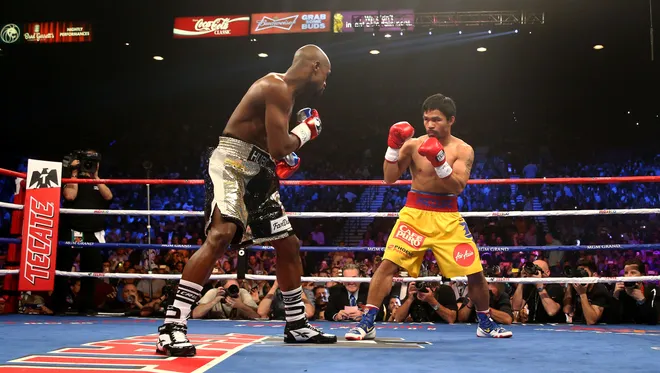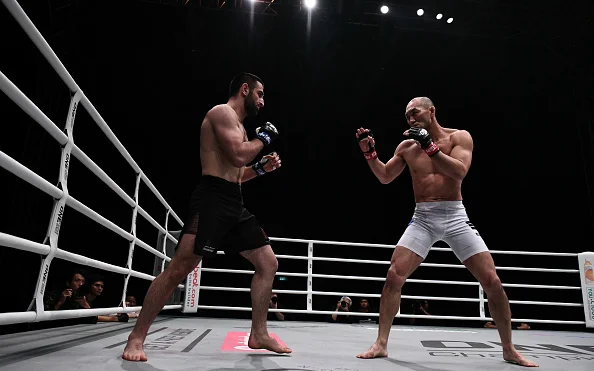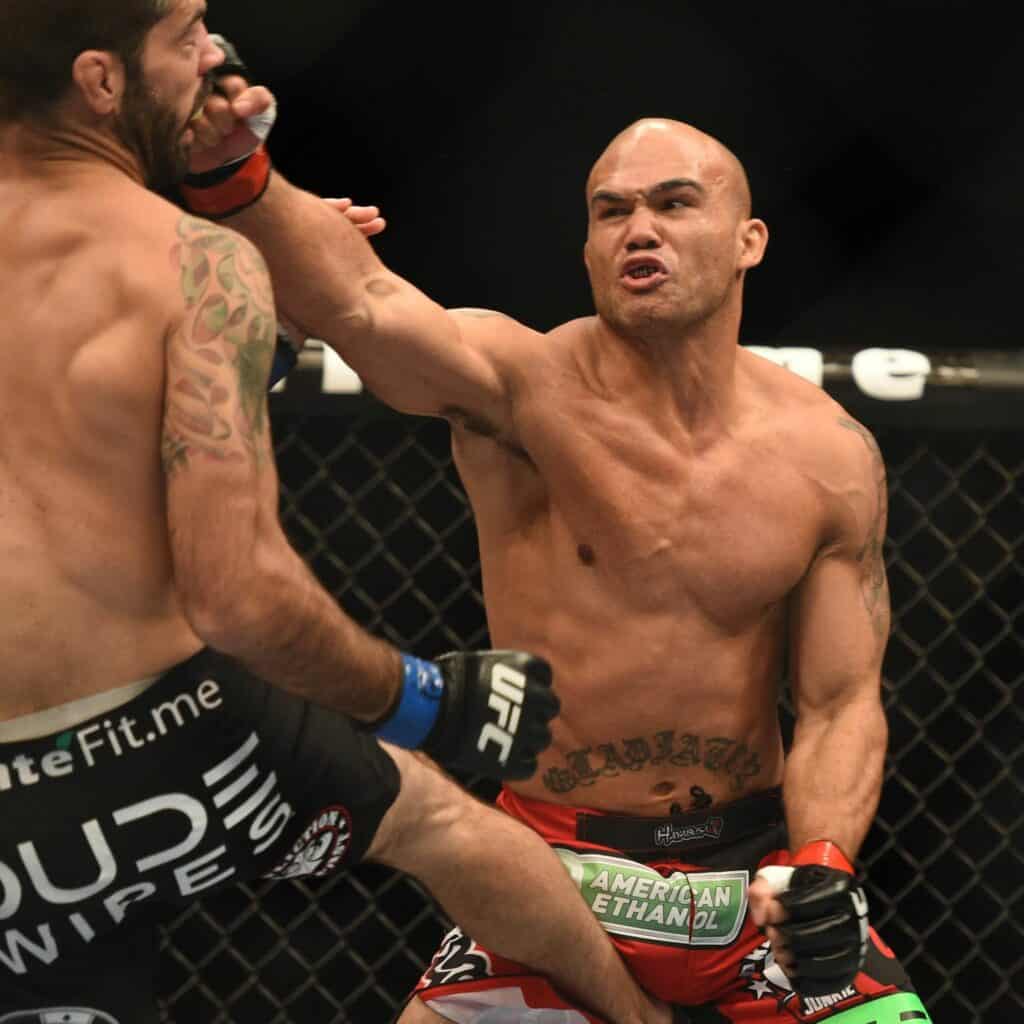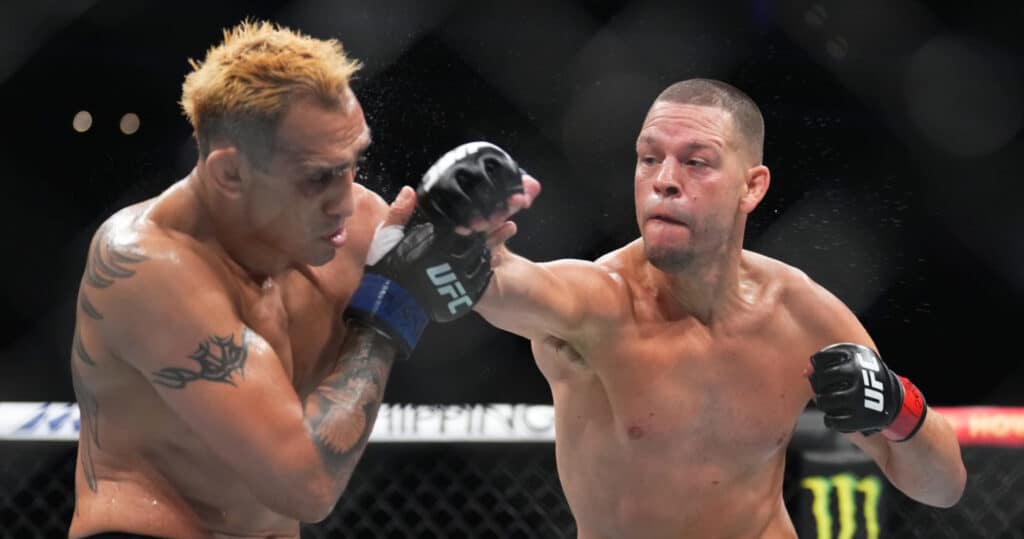The southpaw stance is a fighting stance used in boxing, mixed martial arts, and other combat sports that involve striking. It is also sometimes used in fencing. The southpaw stance puts the fighter’s dominant side (usually the left side) close to the opponent. This puts the southpaw fighter in a dominant position. It can also create opportunities for powerful straight lefts, hooks, and uppercuts.
The Southpaw Stance Throughout History
Some of history’s most famous and successful boxers have used the southpaw stance. Naseem Hamed, Marvin Hagler, and Manny Pacquiao are all southpaws.

In boxing, the term “southpaw” is used to describe a boxer who leads with their right hand and fights from a left-handed stance. The dominant side for the southpaw fighter is usually the left side.
The term “southpaw” originated in baseball, where it described a pitcher who threw with their left hand (instead of the more common right-handed stance). The term came to be used in boxing because the positioning of the southpaw stance leaves the boxer’s left hand further away from their opponent’s line of sight. This can make it harder for the opponent to defend against a southpaw’s powerful left hand.
The term “southpaw” was first used during a bare-knuckle boxing match in 1860. The winner of the fight was reported by the New York Herald to have won by “planting his southpaw forward.”
However, many other martial arts besides boxing make use of the southpaw stance. The southpaw stance basically exists in all striking-based martial arts.
The southpaw stance is common in Muay Thai, Taekwondo, Kyokushin Karate, and many other striking-based martial arts.
It is also used in fencing, where it is sometimes called the “left-handed stance.” This is because the fencer’s left hand is closer to the opponent, and the right-handed sword is held in the dominant hand.
Southpaw In Boxing
When most people think of boxing, they think of two fighters standing opposite each other in an orthodox stance, with their right hands leading. However, this hasn’t always been the case. In fact, for much of boxing’s history, the southpaw stance was far more common than the orthodox stance. It wasn’t until the late 19th century that the orthodox stance began to gain popularity, and even then, it remained far less common than the southpaw stance well into the 20th century. So, what caused this shift?
One theory is that the shift was due to changes in glove design. In the early days of boxing, gloves were small and didn’t offer much protection to the knuckles. This made it difficult for boxers to throw rights with any real power, as they risked injuring their hands. As glove design improved and gloves became larger and more padded, boxers were better able to throw rights without risk of injury, which led to the increased popularity of the orthodox stance.
Another theory is that the shift was simply due to a preference change among trainers. In the early days of boxing, most trainers were ex-prizefighters who had learned to fight in the southpaw stance. As trainers began experimenting with different techniques, they began teaching their students techniques that they weren’t familiar with, which led to increased use of the orthodox stance.
Advantages of the Southpaw Fighting Stance
There are several advantages to fighting from a southpaw stance. The most obvious is that it allows the fighter to fight in his naturally dominant stance. The southpaw stance is also excellent since orthodox fighters aren’t very used to fighting southpaws. Most orthodox fighters usually spar and train against other orthodox fighters, which gives the southpaw a big advantage.
The southpaw stance can also be used to create opportunities for powerful left-handed strikes. The left hand is the power hand for the southpaw fighter, and this gives them an advantage in striking.
Disadvantages of the Southpaw Fighting Stance
The southpaw stance does have some disadvantages, however.
The main disadvantage to the southpaw stance is that it can be difficult to find an opponent to spar with who is also a southpaw. This can make training for a southpaw fighter more difficult. Additionally, the southpaw stance can be slightly less powerful than an orthodox stance for orthodox fighters since the right hand is the power hand.
Another disadvantage is that the liver is more exposed in the southpaw stance. The liver is located on the right side of the body, and when a southpaw fighter is in the stance, their liver is more exposed to punches from an orthodox fighter.
Switching Stances

What if the orthodox fighter wants to use the southpaw stance, and why would he do that? For starters, the orthodox fighter may want to use the southpaw stance to take advantage of the fact that most orthodox fighters aren’t used to fighting southpaws. Additionally, the orthodox fighter may feel that he has more power when using his right hand for jabs and wants to take advantage of that.
MMA fighters can, for example, switch into the southpaw stance in order to protect their left leg from low kicks. If the MMA fighter absorbs many low kicks to his left leg, he may need to switch the stance to protect the damaged leg from getting hurt even more.
The southpaw stance isn’t for everyone, and some orthodox fighters feel more powerful and accurate when using the orthodox stance. Some people are more comfortable orthodox, while others feel more comfortable southpaw. There is no right or wrong answer; it all comes down to what feels natural for the individual fighter.
Some people may feel they need to switch stances in order to protect against an injury. For example, if a boxer has an injured right hand, he may want to switch to a southpaw stance to take pressure off the injured hand.
Some MMA fighters also use the Southpaw stance in order to land quick low kicks with their right leg.
Training Tips for Mastering the Southpaw Stance
The Southpaw stance, while less common, has been a game-changer for many fighters in the world of boxing and mixed martial arts. However, its technical intricacies can pose a challenge for those just starting out. This guide provides crucial training tips for developing and improving your Southpaw stance.
Firstly, patience is key. Transitioning to or mastering the Southpaw stance requires time and practice. Regularly engage in drills that enhance your footwork, improve your guard position, and perfect your punches. Remember, practice makes perfect.
Footwork is a crucial aspect of the Southpaw stance. Lead with your right foot and maintain an angle that opens up your opponent for attacks. Incorporate agility drills in your training regime to enhance your footwork, positioning, and movement.
Secondly, guard position plays a pivotal role in defense and attack in the Southpaw stance. Your right hand should be held high for head protection while the left hand is lower, ready to deliver a powerful punch. Regular shadow boxing can help you maintain this guard position instinctively.
Your power punch is your left cross in the Southpaw stance. It’s the punch that can catch your orthodox opponents off guard and score knockouts. To enhance your punch power, incorporate strength training into your workout routine, focusing on your core and upper body muscles.
It’s essential to recognize that Southpaw fighters often expose themselves to their opponent’s power hand. Therefore, mastering defensive tactics becomes crucial. Regular sparring sessions with both orthodox and southpaw partners will help you familiarize yourself with a range of attack patterns and learn to counter them effectively.
Another tip for southpaw fighters is to study successful Southpaw boxers and MMA fighters. Analyze their fights, pay attention to their tactics, and understand how they leverage the Southpaw stance advantage.
Finally, remember that becoming comfortable with the Southpaw stance takes time. Make it a point to switch to southpaw during your sparring sessions. The more you use it, the more natural it will feel.
Mastering the Southpaw stance in boxing and MMA demands consistent practice, strategic training, and meticulous technique analysis. But the surprise factor it adds to your game can make it worth the effort. Stick with it, and over time, you may find that the Southpaw stance becomes a potent weapon in your fighting arsenal.
Notable Southpaw Fighters In The UFC
Robbie Lawler, Stephen Thompson, Nick Diaz, Nate Diaz, Dustin Poirier, and Conor McGregor are some UFC fighters fighting in southpaw. Each fighter brings their own unique style to the octagon.
Robbie Lawler

Robbie Lawler is a powerful striker who has earned a reputation as one of the most ferocious fighters in the UFC. He is known for his aggressive fighting style and ability to go into overdrive during the last round.
Stephen Thompson

Stephen Thompson is a highly-skilled martial artist who is known for his creative striking techniques. He has beaten some of the best fighters in the UFC.
Nick Diaz

Nick Diaz is a veteran fighter known for his durability and submission skills. He has fought in some of the most high-profile matches in the UFC.
Nate Diaz

Nate Diaz is the younger brother of Nick Diaz. He is also a veteran fighter known for his toughness and ability to finish fights with submissions.
Nate Diaz is also known for his southpaw stance. A prime example is Diaz’s bout against Conor McGregor at UFC 196. Utilizing his southpaw advantage, Diaz was able to land significant strikes, eventually leading to a submission win. His left-handed orientation has undeniably been a key factor in many of his standout performances in the octagon.
Dustin Poirier

Dustin Poirier’s southpaw stance, typical of left-handed fighters, gives him a distinct edge in the MMA ring. Many orthodox fighters struggle to anticipate and counter the unique angles and power strikes from a southpaw. For instance, in his fight against Max Holloway, Poirier leveraged his left-handed stance to land powerful jabs and hooks, often catching Holloway off-guard. This tactical advantage, rooted in his southpaw orientation, has been instrumental in many of Poirier’s notable victories.
Conor McGregor

Conor McGregor was undoubtedly one of the most exciting fighters in the UFC. He is a master of trash talk and backs it up with his explosive fighting style. He has become a household name thanks to his impressive string of victories in the UFC.
All of these fighters used the southpaw stance to their advantage one way or the other.
Notable Southpaw vs Orthodox Matchups in the UFC
There have been many famous southpaw-vs-orthodox matchups in MMA. Here are a few notable examples:
- Conor McGregor vs. Nate Diaz: This was a highly anticipated matchup between two of the biggest names in MMA. McGregor, an orthodox fighter, faced off against Diaz, a southpaw. Diaz was able to use his southpaw stance to his advantage, landing some significant strikes and ultimately winning the fight.
- Jon Jones vs. Daniel Cormier: This was another highly anticipated matchup between two of the best fighters in the light heavyweight division. Jones, a southpaw, faced off against Cormier, an orthodox fighter. Jones was able to use his southpaw stance to land some significant strikes and ultimately win the fight.
- Anderson Silva vs. Chael Sonnen: This was a classic matchup between two fighters with very different styles. Silva, a southpaw, faced off against Sonnen, an orthodox fighter. Sonnen was able to take Silva down and control him for much of the fight, but Silva was able to land a triangle choke in the fifth round to win the fight.
- Valentina Shevchenko vs. Jessica Andrade: This was a matchup between two of the top women’s fighters in the UFC. Shevchenko, a southpaw, faced off against Andrade, an orthodox fighter. Shevchenko was able to use her southpaw stance to land some significant strikes and ultimately win the fight.
- Israel Adesanya vs. Marvin Vettori: This was a highly anticipated matchup between two of the top middleweight fighters in the UFC. Adesanya, a southpaw, faced off against Vettori, an orthodox fighter. Adesanya was able to use his southpaw stance to land some significant strikes and ultimately win the fight.
These matchups showcase the advantages and disadvantages of each stance and highlight the importance of being able to fight effectively against both types of opponents.
Conclusion
The South Paw stance isn’t for everyone but can be useful for some fighters. Finding what works best for you and what feels natural is important. Some fighters are more comfortable with orthodox, while others feel more comfortable with southpaw. There is no right or wrong answer; it all comes down to what feels natural for the individual fighter.












